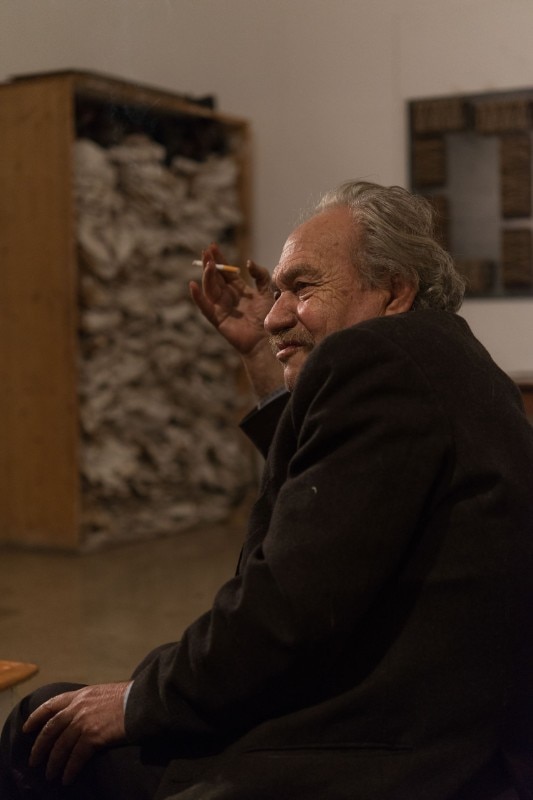I arrived in Rome in the New Year of 1956, and looking back now, it seemed like the end of a classical journey. Renaissance Italy means Europe, or even the West, which is exactly what I wanted. I could have continued on my way, but there was no need to go elsewhere. And due also to my character, there was no question of turning back. Very soon I found artist friends, with whom to talk about art and not only contemporary art: at the trattoria we used to stay out late, talking about classical painting too; not academically, but as if the masters were actually with us at our table. In this way I came to consider that classical art was in reality part of an indispensable identity; that the Modern is not a modernist exercise, but situated within a widespread logic. Italy in the Sixties had its own cultural centrality. It was late postwar, there was a hugely important and dramatic neo-realist cinema. My friends and I made every effort to understand and to read the future, to discover not only the paintings of Fattori but the greatness of Van Gogh too.

Much had been understood in Italy: for example, the importance of American painting. The artist Marc-Relli wrote to Plinio De Martiis – founder of the galleria La Tartaruga in Rome – that in the US a new movement in painting was blossoming. With a hitherto unknown freedom, it was giving the American scene a centrality which France, tired perhaps after the war, no longer had. I’ll never forget the major exhibition by Jackson Pollock in Rome in 1958, at the Galleria Nazionale d’Arte Moderna, curated by Palma Bucarelli. The opening was a big surprise: Pollock experienced space not as a painter, but as a dancer. And so you see, our craving for freedom brought us into contact with that American art, but not with Pop Art. In 1956 building speculation had not yet got under way in Rome, so we were living in a beautiful city, and I was lucky. After my first two or three months there, I realised it was the right place for me: it was postwar Europe, with all its woes and all its secret responsibilities. Even now I just can’t accept what happened to the Jews: not simply an atrocity of war, but something even worse that involved the whole of Europe. The weight of this immorality had to be shouldered too, if the intuition to formalise a new painting was to be freed. That’s why I didn’t stay in America – where I had spent some time in 1958 – but came back to Italy.


I have travelled all over the world for my exhibitions. I have the stuff of a sailor, but I am not globalised, I am an internationalist. I love others because they are different from me; I have worked with a clear conscience without losing sight of the country. Very often I think that modern painting has its own anthropomorphism: and I’m thinking of Russian painting, of Kandinsky and of all those artists that use background colour like icon painters. The ancients had the sacrality of doing, of dogma: there were figures, but in reality they were like Malevich’s square, painted in an infinite space; there was no perspective, which only appeared with the Renaissance. However, how can anybody fail to mention dramatic art when faced with Caravaggio’s Conversion of St Paul in the Basilica di Santa Maria del Popolo in Rome? We belong to this family of shadows. The painter is a man on his own. Once, the people who did icons would go into a monastery and eventually they could become saints. The painter of yesterday tried to address the small audience of an avant-garde theatre, on a subject concerned with life or death.
Today they say a reflection on form is needed, in the hope that it may bring drama, hence Man, back to the surface. We need the courage to know first and to tackle the reality of the rule of economy today, even though this certainly won’t help the birth of a Demoiselles d’Avignon. Nowadays we need an artist who, as a protagonist, can appropriate the past and come up with surprising images to lend structure and credibility to our works.
This text is taken from a conversation between Jannis Kounellis and Nicola Di Battista, which took place in November 2015 at the artist’s studio.











